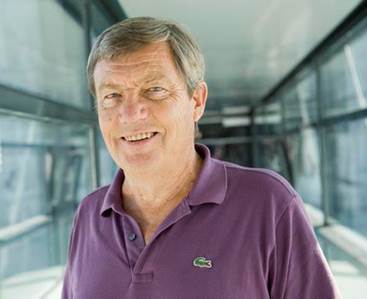Helmuth Möhwald教授在胶体化学与界面科学领域享有非常高的学术地位和影响力,曾担任欧洲胶体与界面学会主席、德国胶体学会主席以及多个国际著名期刊的主编和编委。Möhwald教授在众多研究领域有很深的造诣,包括仿生科学、界面与胶体科学、受限空间的化学与物理等,已在Science、JACS、Angewandte Chemie、Advanced Materials、Physical Review Letters等刊物发表学术论文910余篇,被引用37000多次,H-因子为96,是世界上他引频率最高的科学家之一。Möhwald教授也获得许多奖项,包括the Overbeek medal of the European Colloid and Interface Society, the Gay-Lussac Award from the French Ministry of Science and Technology, the Wolfgang-Ostwald award of the German Colloid Society,并于2012年当选为欧洲科学院院士。在他的努力推动下,1992年德国马普学会成立了胶体与界面研究所,他曾担任该所的所长。2011年,Möhwald教授受聘为苏州大学客座教授。
Professor Helmuth Möhwald is a physicist and physicochemist and received his Ph.D. in physics from Max Planck Institute for Biophysical Chemistry in 1974. He is one of the founding directors of the world-famous Max Planck Institute of Colloids and Interfaces, and since 1993 he served as the director and scientific member at this institute. Prof. Möhwald is a well-known specialist in a wide range of research areas, such as liquid/gas interfaces, biomimetic systems, and chemistry and physics in confined space. He has published more than 910 peer-reviewed publications and his work has been quoted more than 37000 times and his H-index is 96.
He is also a highly successful university mentor, and more than 105 former colleagues now occupy professorial chairs in Germany and abroad, in the areas of physical chemistry, applied physics and biophysics, polymer chemistry, material sciences and chemical engineering. He is also honorary professor at the University Potsdam (1995) and the Chinese Academy of Science (2006), guest professor at University Pennsylvania (1983), Zhejiang University (2001), Fudan University (2004), Harbin Institute of Technology (2011) and Soochow University (2011). Dr. Möhwald has served as the Chair of European Colloid and Interface Society (2002-2003) and German Colloid Society (2003-2007).
He received numerous awards, such as the Physics award of the German Physical Society (1979), the Overbeek medal of the European Colloid and Interface Society (2007), the Gay-Lussac Award from the French Ministry of Science and Technology (2007), the Wolfgang-Ostwald award of the German Colloid Society (2009), and BP Visiting Lecturer of Cambridge University (2010). In 2012, he was elected Member of the Academy of Europe.
报告内容摘要:
Alternating electrostatic assembly of oppositely charged polyelectrolytes has been shown to be a versatile technique to form stable multifunctional films. Since this technique does not depend on a planar support it has also been possible to coat sacrificial colloidal templates. After their removal hollow capsules were obtained with walls controlled as well as the planar films. These capsules on one hand promise many applications carriers for drugs or anticorrosion agents.
Inserting metallic nanoparticles into the walls of these capsules one can locally melt by IR light thus effecting release of drugs like signal peptides inside cells. Their function can then be followed microscopically.[1] Another application in biosciences concerns films into which lipid polyelectrolyte capsules have been inserted. Locally heating via nanoparticles as efficient IR absorbers one thus releases drugs affecting cells attached to the surface. As the mechanical properties can be controlled at will one may tune them to induce mechanically the capsule release. This in turn can be converted into a pressure gauge estimating the pressure experienced by a capsule inside a cell.[2]
One of the prominent applications of capsules in films results from the possibility that this can affect neighbouring cells via release upon a specific stimulus or via an external field. One example to be discussed will antifungal coatings where a neighbouring bacteria excretes lactic acid that in turn causes a coating to reject the bacterium or causes release of a fungicide.[3]
References
[1] R. Palenkar et al. Small, 2009, 5, 2168.
[2] M. Delcea et al. Small, 2010, 6, 2858.
[3] J. Gensel et al. Adv. Mater., 2012, 24, 985.
欢迎感兴趣的师生踊跃参加!
